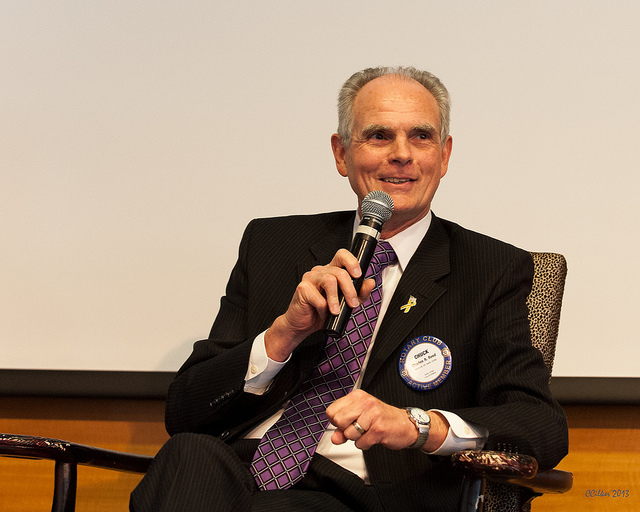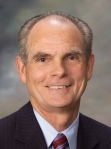Reporter Ed Mendel covered the California Capitol in Sacramento for nearly three decades, most recently for the San Diego Union-Tribune. More stories are at Calpensions.com.
A California superior court judge has awarded judges back pay and a pension increase, ruling that a five-year freeze on their salary did not keep pace with average increases in state worker pay, a requirement under state law.
But the state has not agreed to the amount owed judges in the class-action suit filed by a former court of appeals presiding justice, Robert Mallano, shortly before he retired two years ago.
In a filing last week by Mallano’s attorney, Raoul Kennedy of Skadden Arps in Palo Alto, a consultant calculated that superior court judges are owed $14,664, appeals justices $16,782, associate justices $17,898, and chief justices $18,763.
Total back pay for the 1,700 active judges listed last year would be roughly $25 million, which includes 10 percent annual interest awarded by Los Angeles Superior Court Judge Elihu Berle in a decision last December.
The state disagreed with the judgment, arguing that the award of specific salaries and pension amounts is “akin to an award of damages” and that ordering the state to pay Mallano’s attorney fees is “procedurally improper” and “unwarranted.”
“The salary amounts cannot be accurate because the salary adjustments, if any, that would be made to judges in accordance with the court’s judgment will vary among individual members of the plaintiff class,” the state said as quoted in Kennedy’s filing. “It is impossible at this point to calculate what those individual figures would be.”
The state filed objections to the court’s draft judgment, and a hearing has been set for March 9.

Changes in pay can affect not only employer and employee contributions to the California Public Employees Retirement System, but also the amount of the pension paid to retirees.
The Mallano decision is briefly mentioned in the annual CalPERS valuations of the two judges retirement systems issued this month for the fiscal year ending last June 30.
“The increases and amounts owed have not been calculated yet,” said CalPERS. “We anticipate the impact of this lawsuit to be reflected in the June 30, 2016 valuation (issued next year).”
An old retirement system for judges hired before Nov. 9, 1994, has an unusual provision. Annual pension increases for retirees are based on pay increases for active judges, not inflation up to 3 percent a year as in the new system.
But it’s another unusual provision in the old retirement system that is a continuing conflict between CalPERS, acting on behalf of the judges, and the Legislature and the governor.
The old system is pay-as-you-go, operating mainly with a state contribution large enough to pay retiree pensions each year and a much smaller amount from active judges (8 percent of pay). No additional money is invested to “pre-fund” future pension costs.
“Although it is unlikely the State would fail to pay ongoing benefit payments, as they are due, the lack of pre-funding means there is no benefit security for members of this plan,” said a CalPERS staff report with the new Judges Retirement System valuation.
“It also means the total cost is higher to the State since there is no accumulation of assets and, consequently, little to no investment earnings can be used to defray costs.”
CalPERS expects investment earnings to pay 65 percent of future pension costs, the rest coming from the annual contributions of employers, 22 percent, and employees, 13 percent.
In a routine annual letter to the governor and Legislature this month urging pre-funding of the old judges system, Rob Feckner, the CalPERS president, said “the board has considered the System’s funding deficiency to be a serious matter for many years.”
CalPERS estimates that doubling the state $227.3 million pay-as-you-go contribution next fiscal year to $448.6 million would save $1.3 billion over the remaining life of the plan, dropping the projected $5.6 billion pay-as-you-go cost to $4.3 billion.
In one of the minor instances of the mismanagement of state pension funds (see major examples in a previous post), the legislation that created the new judges system repealed a requirement that the old system be fully funded.
A legislative analysis of SB 65 in 1993 gave no explanation for the repeal of a requirement that the old system be pre-funded with a target of eliminating its pension debt or “unfunded liability” by 2002.
But a likely explanation for leaving the old system with pay-as-you-go pensions that deliberately pass debt to future generations would seem to be avoiding the cost of pre-funding: an estimated $100 million a year to reach full funding by 2002.
Now the old Judges Retirement System has a debt or unfunded liability of $3.3 billion. The dwindling number of active judges in the system, 231 in the new valuation, are outnumbered by the 1,924 retirees and beneficiaries receiving pensions.
In contrast, The new Judges Retirement System II for those appointed or elected after Nov. 9, 1994, has no debt or unfunded liability. It’s 100 percent funded in the new valuation, down from a surplus of 107 percent the previous year.
The 1,470 active judges in the new system outnumber the 96 retirees and beneficiaries. The employer contributions is 23.2 percent of pay. Judges hired before a reform on Jan. 1, 2013, contribute 8 percent of pay, those hired later 15.25 percent of pay.
Two years ago, pre-funding the old judges retirement system was on Gov. Brown’s to-do list when he proposed a funding solution, later enacted, for the California State Teachers Retirement System.
“We still have retiree health,” he said then, before following up last year with a plan to bargain changes with state worker unions. “We still have the judges retirement system. We have got lots of other stuff here, and we will handle it.”

Another continuing conflict is judges ruling on issues that affect their own pensions. In the Mallano decision, Judge Berle presumably is included in his decision awarding back pay and a pension increase.
What some pension reformers think is a key way to reduce unaffordable pension costs, cutting pension amounts current workers earn in the future, is prevented not by legislation but by a series of state court decisions often called the “California rule.”
California judges have rarely if ever recused themselves from ruling on pension issues that might benefit them. In Arizona, four supreme court justices recused themselves from a current case to overturn a pension contribution increase for judges and others.
The case is being heard by other Arizona justices in a new pension plan not affected by the outcome. Some recent California retiree health care cases have been heard in federal court. But whether that is an option for pension cases is not clear.
Meanwhile, the conflict of interest continues. When Orange County unsuccessfully tried in 2011 to overturn a retroactive pension increase for deputy sheriffs, an attorney arguing the case for the deputies emphasized the point.
“Miriam A. Vogel, a retired Court of Appeal justice, clearly told her former colleagues that the court’s decision would affect every pension in the state of California: ‘(I)t would affect yours, it would affect mine,’” former Orange County Supervisor John Moorlach (now a state senator) wrote in the Orange County Register.
Photo by Joe Gratz via Flickr CC License




















